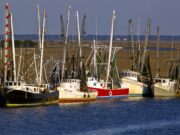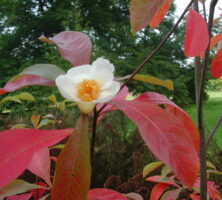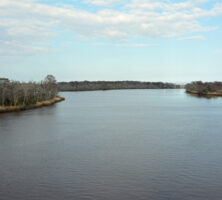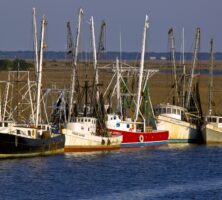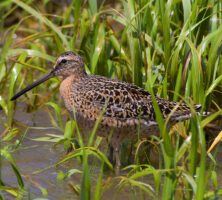The third largest contributor of freshwater to the Atlantic Ocean on North America’s eastern shore, the Altamaha River basin lies entirely within the state of Georgia. The Altamaha River, formed by the confluence of the Ocmulgee and Oconee rivers near Lumber City and joined farther downstream by the Ohoopee River, flows more than 130 straight-line miles from its northernmost points to its entry into the Atlantic Ocean north of Brunswick. The Altamaha River basin drains nearly one quarter of the state of Georgia, with its 14,000-square-mile watershed reaching from the upper Piedmont to the Lower Coastal Plain and encompassing the cities of Athens, Macon, Milledgeville, and parts of Atlanta.
Perhaps the earliest overview of the Altamaha’s reach was given by naturalist William Bartram more than two centuries ago:
But, before I leave the Alatamaha, we will proceed to give a further and more particular account of it. It has its source in the Cherokee mountains, near the head of the Tugilo, the great west branch of the Savanna, and, before it leaves them, is joined and augmented by innumerable rivulets; thence it descends through the hilly country, with all its collateral branches, and winds rapidly amongst the hills two hundred and fifty miles, and then enters the flat plain country, by the name Oakmulge; thence meandering an hundred and fifty miles, it is joined on the east side by the Ocone, which likewise heads in the lower ridges of the mountains. After this confluence, having now gained a vast acquisition of waters, it assumes the name Alatamaha, when it becomes a large majestic river, flowing with gentle windings through a vast plain forest, near an hundred miles, and enters the Atlantic by several mouths.
The river and its floodplain swamps and marshes are among the most undisturbed habitats in the state, although increasing population in the Coastal Plain and pressure from development are threatening their pristine nature. The integrity of the lower river’s ecosystem can be credited in part to the absence of dams: the banks of the river as it courses through the Coastal Plain are so low-lying and broad that the river is relatively inaccessible to humans.
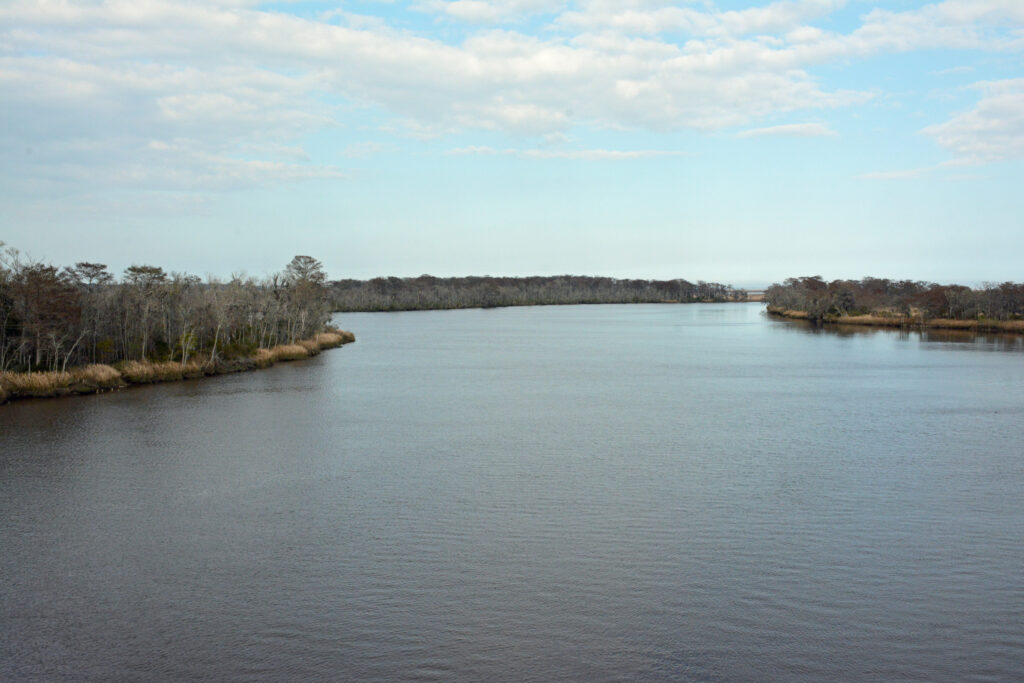
Image from Bubba73 (Jud McCranie)
The Altamaha flows into the Atlantic Ocean near Darien, about midway down Georgia’s coastline, carrying millions of gallons of freshwater, nutrients, and sediments to the estuary and coastal area every day. This estuary, where the freshwater from the river mixes with saltwater from the Atlantic, occupies an area of roughly twenty-six square miles in Glynn and McIntosh counties in southeastern Georgia and is arguably the largest intact, relatively undegraded estuary system on the Atlantic coast.
A mix of geological events, environmental variables, and human impact has shaped the character of the Altamaha. Sixty-five million years ago, during the late Cretaceous geological period, what are now the lower reaches of the Altamaha River were beneath the sea. Sandbars along the river and forests beyond the banks were still prevalent in the upper sections of the river, as is true today, but the estuary itself was far into the landscape of present-day Georgia. The marine waters gradually receded during the Eocene epoch (55-38 million years ago), so that millions of years later the freshwater followed natural courses from the Georgia uplands to the Atlantic Ocean, ultimately forming the river systems we know today.
The Altamaha has a distinctive and fascinating natural history long appreciated by naturalists. The environmental perspective captured by Bartram applies to many sections of the river system even today. Travelers along the Altamaha River can still see a variety of trees and bushes: wax myrtle, sweet bay magnolia, spicebush, red bay, alder buckthorn, chicasaw plum, and cherry laurel.
The Altamaha River flows through the legendary longleaf pine system of the Southeast’s Coastal Plain. Once, 90 million acres of the towering Pinus palustris swept through the southern states. In 1865 one man alone, Robert Pell, had 4 million acres for sale, with the Altamaha at the epicenter of his holdings. Logging along the Altamaha before 1870 was limited to what was accessible from the banks. Pine that was close enough to be hauled to the river was floated to the port of Darien. Most of the longleaf forest remained standing, however, until the introduction of the railroads into the interior of the Coastal Plain after the Civil War (1861-65). Within fifty years that endless stretch of pines was mostly destroyed, and today it is estimated that only 3-4 million acres have survived.
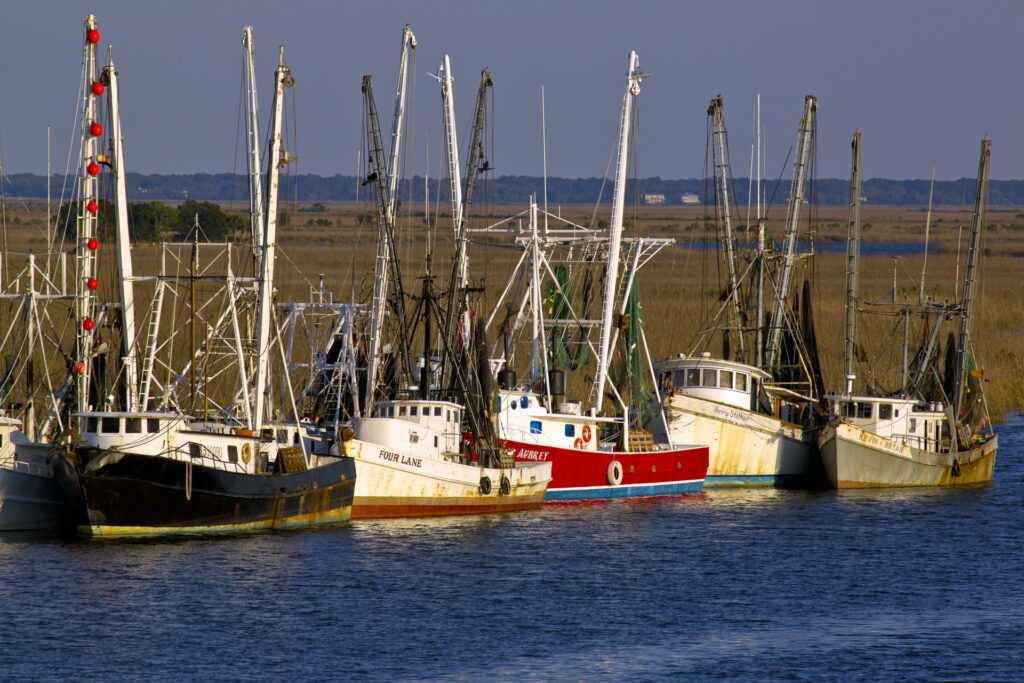
Courtesy of Explore Georgia.
Hardwoods probably came under the pressures of human forces much earlier, as they were removed from the bottomlands of the floodplain and used to fuel the steam engines of the boats that plied the waters of the river for commerce and transportation. It is possible that the early deforestation of riverbanks throughout eastern North America contributed to the decline of the Carolina parakeet (Conuropsis carolinensis). Georgia’s only native parakeet nested in cavities in the hardwood trees along riverbanks, and as these trees disappeared, so did the now-extinct green-and-yellow bird.
Today, more than 120 rare or endangered species are associated with the Altamaha River. Any southeastern river with such a broad watershed and extensive area of pristine habitat would be expected to have a wealth of indigenous plant and animal species, including some that are endemic or special in other ways. These characteristics have prompted the Nature Conservancy to identify it as one of “America’s Last Great Places” and to establish the Altamaha Bioreserve. Local citizens have taken the initiative to protect their river through the Altamaha Riverkeeper.
Flora and Fauna
Many bird populations that once thrived along the Altamaha, such as the Carolina parakeet, have declined, but some cling tenaciously to their old habitat. In 1812 Alexander Wilson, author of the first book on American ornithology, reported that the dramatic black-and-white swallowtail kites (Elanoides forficatus) were a common sight and that twenty or thirty were to be seen at a time on some southern rivers. Today pairs of the swallowtail kites are rare, but they can still be seen gliding over the trees along the lower Altamaha River. The deep and heavily forested riparian (riverside) buffers that have returned to the Altamaha provide just the right breeding habitat for this beautiful bird and are a mecca for birdwatchers. Virtually every species of neotropical migrant that uses the Atlantic Flyway is likely to be spotted among the forests and marshes of the Altamaha. The brilliant yellow prothonotary warbler (Protonotaria citrea) is one species that favors the wooded swamps afforded by the river’s generous floodplain.
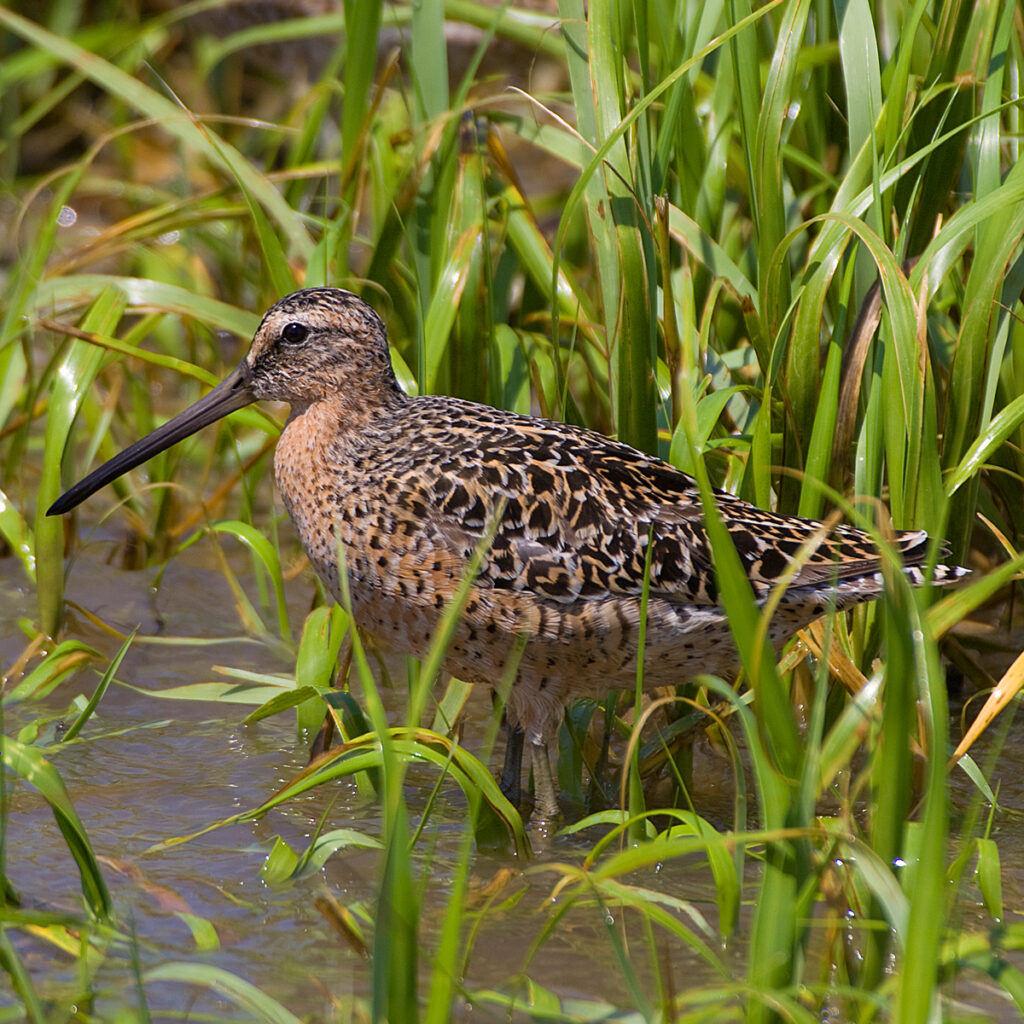
Image from Electronic Collection of Georgia Birds
All long-flowing southern rivers once were home to magnificent assemblages of animal biodiversity in the form of mollusks, crustaceans, and other invertebrates, as well as vertebrates. The Altamaha River ranks near the top among southern rivers that still harbor a rich diversity of molluscan fauna. Among the notable species, some of which are rare and protected, are eleven species of mussels that are defined as at risk.
Among the high diversity of freshwater fishes native to the Altamaha, one of the most notable is the shortnose sturgeon (Acipenser brevirostrum), an anadromous fish, or a fish that swims upriver from the sea for breeding. The lack of dams on the Altamaha River may have kept this river’s sturgeon population healthier than those of other Georgia rivers. The species has been federally listed as endangered since 1967. The robust redhorse (Moxostoma robustum) is another fish species associated with the free-flowing hydraulics of the Altamaha River basin. Identified in 1869 by Edward D. Cope in the Pee Dee River drainage of North Carolina, the robust redhorse was incorrectly labeled for more than 120 years, until specimens of an “unknown” species showed up in 1991. The largest population to date has been found in the Oconee River of the Altamaha River basin.
A variety of reptiles and amphibians are native to the bottomland and swamp forests that line the river and to the river itself. Although none is endemic to the Altamaha, some of the increasingly rare and seldom-encountered species of the Southeast persist in the river system, such as the bird-voiced tree frog, gopher frog, river frog, rainbow snake, and glossy crayfish snake. In addition, all of the species of reptiles and amphibians within the geographic range that are characteristic of southern river systems are present in the bordering swamps or the river itself, including the greater siren (a kind of salamander), bullfrog, American alligator, common snapper turtle, spiny softshell turtle, brown water snake, and cottonmouth snake.
Mammals of the Altamaha drainage likewise include the rare and unusual as well as those typical of southern river systems. Throughout its length, river otters and beavers inhabit the backwaters, floodplain pools, and river itself, whereas bobcats and gray foxes prowl the undisturbed riparian forests. Feral pigs, descendants of domestic stock of early settlers, continue to make their mark on the swamp system with their ubiquitous rooting. Among the more intriguing mammals associated with the Altamaha River is the West Indian manatee, a marine mammal that migrates to the lower estuary region during the summer.
Distinctive plants along the Altamaha include Radford’s dicerandra (Dicerandra radfordiana), a rare mint that is known to grow only in two places along the Altamaha River sand ridge. When crushed, the oils released from the leaves are reminiscent of cinnamon. This special Georgia native sends out a flare of magenta-purple blossoms in the fall. The Georgia plume is a handsome shrub or small tree that displays thick white sprays of flowers in the summer and bright red and orange leaves in the fall. The largest known population of this rare plant is found near the Altamaha at Big Hammock Natural Area. It was first collected by William Bartram in 1773, but Bartram’s pressed specimen at the British Museum did not come to light until after the plant was collected by Stephen Elliott in 1808 and named in his honor in 1810—the plume’s scientific name is Elliottia racemosa.
The Altamaha River is the source of one of the most mysterious plant species ever found in North America, the Franklinia alatamaha, or the Franklin tree. The species is a tree in the tea family (other examples ares asanqua and the camellias). Franklinia, the only representative of its genus, disappeared from the wild some time before the early nineteenth century (it was last sighted in nature in 1803). In October 1765 John and William Bartram discovered a small grove of trees with white flowers found only along the southern reaches of the Altamaha River. Bartram sent seeds from the tree to England, where they were planted by his research patrons. Bartram also planted some of the seeds in his garden in Philadelphia. Although no longer found in the wild, one can now buy the Franklinia at garden centers. The tree is a reminder of the wealth of biodiversity and ecological intrigue that awaits visitors to the Altamaha River.
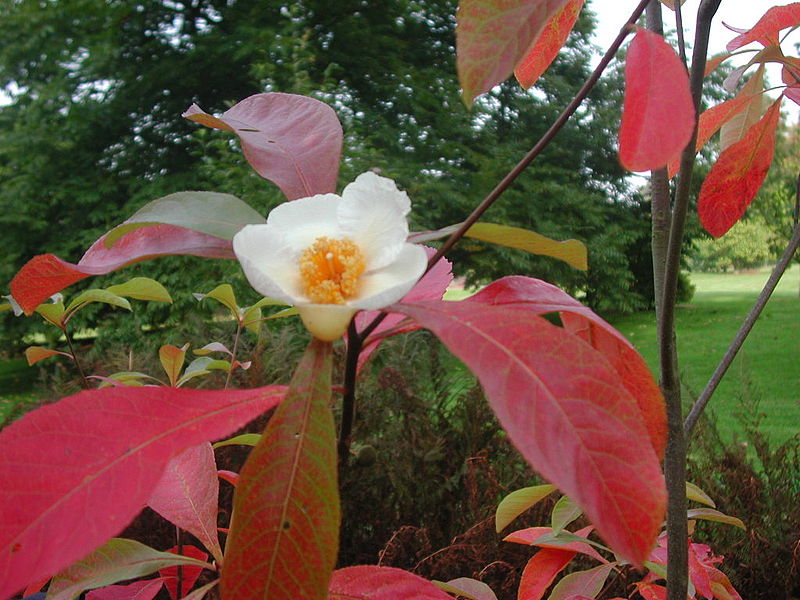
Photograph from Francine Riez, Wikimedia


